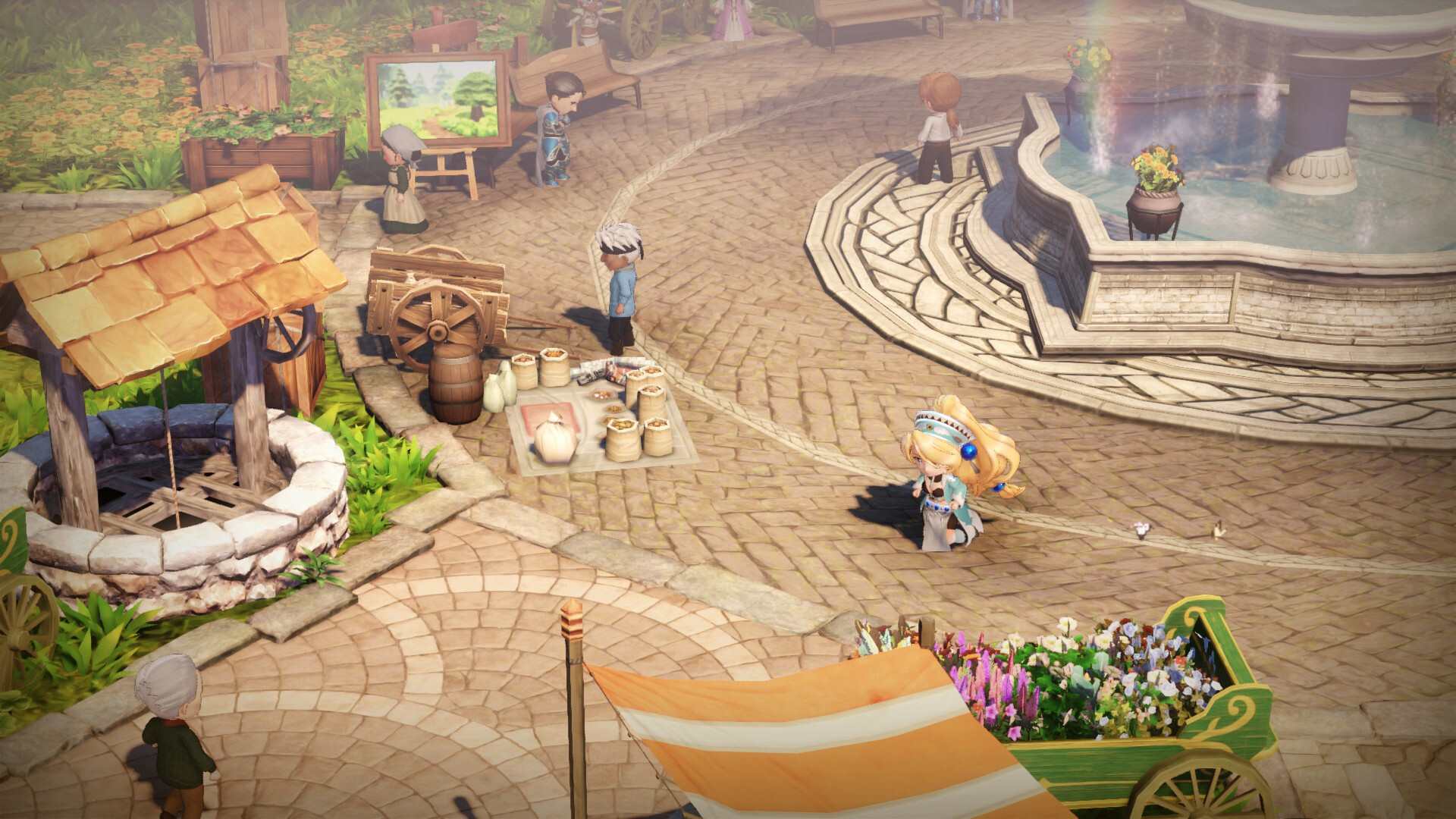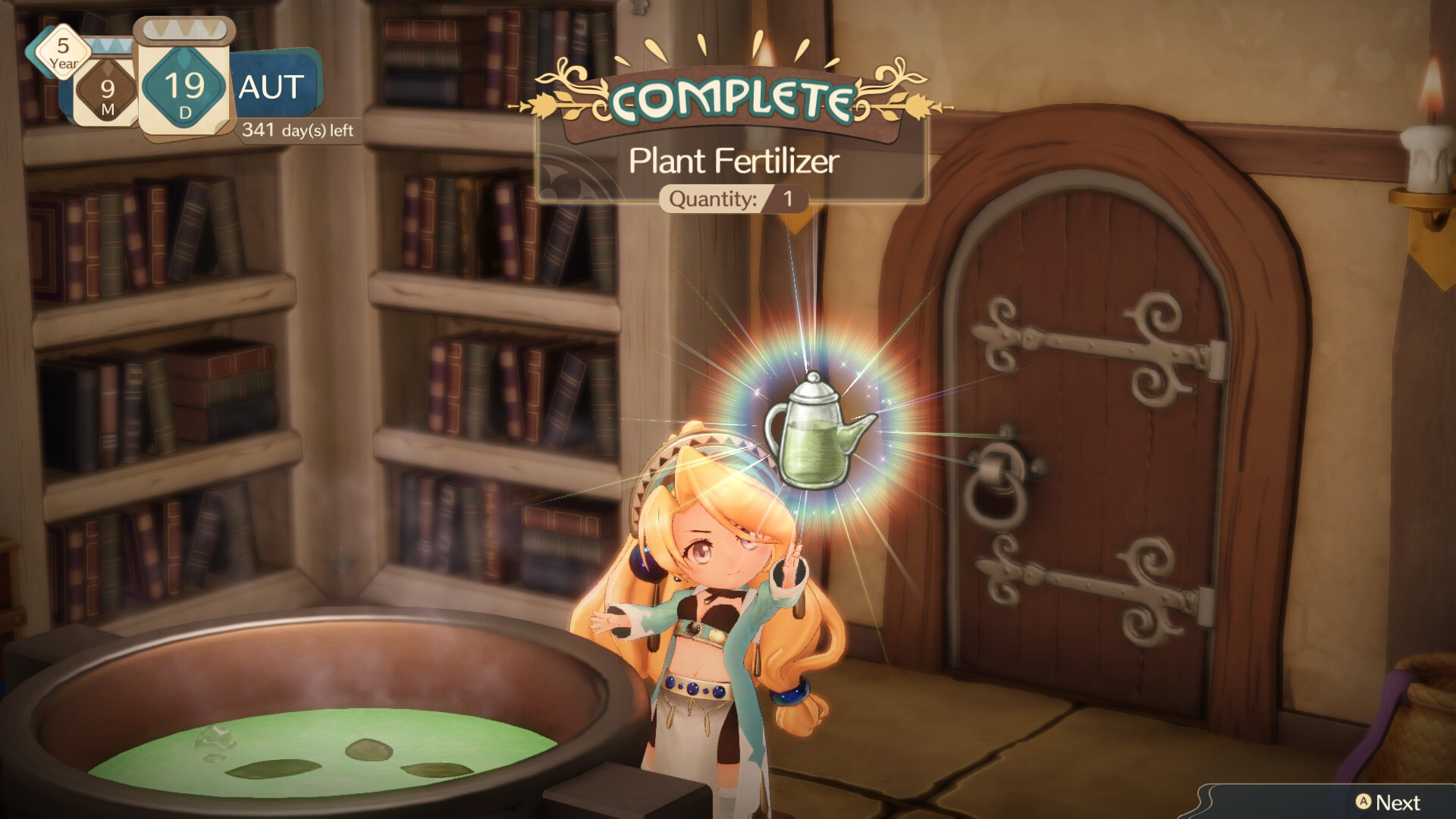When you think about it, Gust’s Atelier series has been very consistent in the past few years. The Atelier Ryza trilogy is its biggest hit, with Atelier Ryza 3 recently wrapping up the trilogy, while Atelier Sophie 2: The Alchemist of the Mysterious Dream also received strong praise. Each has built upon the alchemy of previous games in new and exciting ways while presenting bigger and more epic scenarios. But did you ever wish you could return to the good old days? When an Atelier title meant not saving the world and just chilling out?
The latest title does just that, going back to the very beginning. Atelier Marie Remake: The Alchemist of Salburg is based on the first game in the series, first released on the PlayStation in 1997 for Japan. It was subsequently ported to Sega Saturn the same year and received a Plus version in 1998 before arriving on other platforms like PC, Dreamcast, PS2, iOS and Android, but never released outside of Japan.
Thus, the remake allows for experiencing the series’ origins with snazzy, revamped visuals. However, if you expect a more comprehensive remake with new mechanics or quality-of-life features to match the more modern games, Atelier Marie Remake will disappoint.
“Atelier Marie plays out over multiple days and months in a year, and you can venture out to speak to the townsfolk in Salburg, gather materials in nearby areas or take on tasks to deliver items and resources.”
The story starts with Marlone, or Marie, a student at the Royal Academy of Magic in Salburg. She’s at the bottom of her class in grades and is subsequently given a special exam by her professor, Ingrid. Marie must make a unique item to impress her within five years. With an Atelier at her disposal, Marie gets cracking, and that’s pretty much where the narrative rests on your hopefully capable shoulders because the plot is driven by what you decide to do.
Atelier Marie plays out over multiple days and months in a year, and you can venture out to speak to the townsfolk in Salburg, gather materials in nearby areas or take on tasks to deliver items and resources. You can interact with characters like Schia, Marie’s friend; Kries, the Academy’s best student, but also arrogant and dismissive of Marie; My, an upbeat adventurer; and more. These characters can be recruited (for a wage) to accompany Marie on gathering sessions and quests.
Your popularity also determines whether they accompany you, and it can only increase by completing different tasks. Some tasks pop up as you progress through the story, like bandits taking up residence at a nearby cave which must be dealt with. Others involve going to a place and gathering materials, then delivering them before the deadline.
If you fail to do so, then your reputation drops slightly. Tasks can also arrive from Ingrid, asking Marie to adventure with four different party members. When your reputation increases, stronger characters can offer their assistance.
“Why not for a set number of resources or even the entire time I’m in that location? On the bright side, Marie doesn’t need to switch tools to mine, gather or fish, so that’s nice.”
Salburg also offers facilities like a blacksmith for purchasing new weapons and armor while the Academy sells materials and recipe books. The latter’s inventory can change daily, and different events become available in select months. Otherwise, characters provide some dialogue, maybe some items, and probably inform you of rumors they’ve heard, which can lead to different events. Even with the option to fast travel to places in Salburg, you can freely explore and run around, unlike in the original. The mechanics of all this is very straightforward; the catch is the time limit.
When re-entering the Atelier, a day will pass, but traveling back and forth between locations can take several days. Even gathering materials causes time to pass, so if you pick up a single item, that’s one day gone. It isn’t the worst thing in the world, but it’s worth noting if you’re trying to pick up everything and then venture back to the Atelier to dump it all off. That may be more accommodating for one Reisalin Stout, but Atelier Marie is far stingier (especially with only 40 slots available in your inventory at the start).
You must be more selective about the materials, some of which you won’t even know until you’ve picked them up for the first time. While I can appreciate the time limit and how it causes you to plan out each gathering expedition, applying it to picking one resource at a time is a little harsh.
Why not for a set number of resources or even the entire time I’m in that location? On the bright side, Marie doesn’t need to switch tools to mine, gather or fish, so that’s nice. You can also hire fairies at some point to assist in gathering with different kinds requiring more money based on how quick they are.
“One of the main appeals of an Atelier game is the alchemy part, but Atelier Marie is very basic in that regard. You mix two ingredients, specify the number of items you want, and that’s it.”
There is an Unlimited Mode that turns off the time limit, but you will miss out on some events when enabling it. Aside from gathering, there’s also combat. Including Marie, up to three party members are allowed in battles, and you can choose between basic attacks, guarding, Skills, Items and running. Party members can also change formation during combat, so if you want to have characters go forward and deal more physical damage, hang back for more magical damage or stay centered for neutral benefits, that is an option.
It doesn’t add as much complexity as you’d think to most battles. You’ll have your hardest-hitting attackers in front, Marie in the back, rinse and repeat. Some Skills can pierce multiple enemies in a row, and there is a turn order to keep in mind. Items are also used in battles, but we’ll get to that later. All in all, combat is extremely simplistic and straightforward. While exploring, you may also jump into mini-games which involve platforming or bonking Punis with a hammer and avoiding bombs.
They’re fine – not necessarily the best and somewhat floaty (especially when trying to jump over obstacles during one mini-game, with knockbacks being annoying), but they’re there. Locations are fairly constrained, and it’s easy to get turned around, looping back to the beginning and realizing that’s all there is. The variety of environments is nice, and even if they’re all more or less the same in terms of traversal, they have unique resources and enemies.
One of the main appeals of an Atelier game is the alchemy part, but Atelier Marie is very basic in that regard. You mix two ingredients, specify the number of items you want, and that’s it. Marie builds up fatigue with each synthesis, increasing the failure rate, and thus you need to spend time resting to recover. You can craft some items, like explosives, for use in battle on top of healing allies, raising their attack, and more, though it doesn’t add that much complexity on top.
“For those accustomed to the quality of life changes, stronger story-telling, deeper characterization, faster-paced combat, in-depth crafting and freedom of contemporary titles, it falls short.”
Aside from purchasing a few tools and reading books to learn new recipes, there isn’t more to it, which is understandable, given that it’s based on a 26-plus-year-old game. However, you would think that quality-of-life features like auto-adding materials for quick synthesis would be available.
The biggest change to Atelier Marie is the visuals. Instead of 2D sprites and hand-drawn environments as backgrounds, everything is fully 3D. It looks very sharp, even if the chibi design of the characters won’t gel with everyone. Animations are limited, but at least character portraits during conversations are high resolution and very sharp.
Oddly enough, the animated cutscenes were low resolution and running at a low frame rate – it’s unknown why they’re recorded this way, but hopefully, there’s a fix. The music has also been rearranged, though you can switch back to the original. It’s fine, as a whole, but some of the melodies, like the blacksmith’s shop, can get a little jarring on loop.
Overall, Atelier Marie Remake: Alchemist of Salburg is a decent remake of the original for a new generation. However, for those accustomed to the quality of life changes, stronger story-telling, deeper characterization, faster-paced combat, in-depth crafting and freedom of contemporary titles, it falls short. Even if it wasn’t sold for $50 at launch, just $10 less than any of the Ryza games or Atelier Sophie 2, Atelier Marie Remake isn’t extensive enough to recommend to all but the most ardent fans.
This game was reviewed on PlayStation 5.
Atelier Marie Remake: The Alchemist of Salburg Review – Nonequivalent Exchange
Source: News Beginning




0 Comments